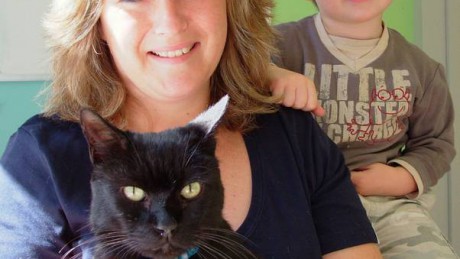
Leopard Geckos are fascinating pets. Gary started off with two females several years ago, and he found himself becoming increasingly captivated by his lizards. He bought a bigger tank, with a more elaborate environment for his pets. Then last year, he bought a male Gecko, and he was delighted when his females started to lay eggs three months later. He then bought his own incubator, and a few months ago, he hatched his own baby Geckos.
Gary has become an amateur expert in Leopard Geckos, gleaning information from pet shops, books and the Internet. He has the husbandry of his pets finely tuned, and as a result, they rarely have health problems. However, recently, he had noticed that the male Gecko was not fully shedding his skin, and he asked me for help.
Geckos are a type of lizard, found in many warm countries around the world. They are named because of their strange bird-like call. I remember hearing my first Gecko when I was in Thailand. The noise was like someone calling in a high-pitched voice – “Geck – Oh”. It was at night, and so I searched for the source of the noise with a torch. I found a four-inch long lizard crawling up the wall beside my bed. Geckos have flat toe pads, covered with microscopic hooks that let them climb surfaces easily, like miniature spidermen. They can climb up vertical glass surfaces, and even run upside down across ceilings.
Geckos are harmless, non-toxic creatures, and even in the wild, they are charming and interesting. They eat insects, and in the tropics, anything that keeps the mosquito burden down by eating them has to be a friend.
Leopard Geckos originate from the India and Pakistan area. They live in deserts and dry grasslands, taking shelter under rocks and in shallow burrows. Nearly all of the Leopard Geckos that are kept as pets nowadays have been bred in captivity, but they have the same needs as their ancestors in the wild. They are kept in a vivarium, which is basically a large glass fish tank. The floor of the tank is covered with a “substrate”, which is usually sand, mimicking their natural desert environment. “Cage furniture” is also placed in the vivarium, with a hide-box for the Gecko to use as a den, and an assortment of rocks and pieces of wood to make the Gecko’s home more interesting.
A heat source is essential. Gary has a special light for the Geckos to bask under at one end of the tank, and a heat pad beneath to provide warmth from below. He uses a thermometer regularly to check that he has the temperature within the correct range. It is also important to make sure that a Gecko’s environment has the correct humidity, and as well as shallow water bowls that are continually filled, Gary mists the vivarium with a plant sprayer from time to time.
Ireland has a poor insect population compared to tropical countries, and so Gary needs to buy in a food supply for his Geckos. He buys plastic containers full of young crickets from the pet shop. These are fed live to the Geckos, three times a week. I was visiting Gary during feeding time last week, and it was remarkably simple. The crickets hop around the cage, while the Geckos silently creep up behind them. Then they lunge rapidly and silently, and the crickets have been swallowed before they are aware of anything.
It is normal for Geckos – like snakes – to shed their skins regularly. When young Geckos are growing, they lose their skins once a week, but as adults it happens only once every few months. Unlike snakes – who leave their skins behind them – Geckos have a strange habit of eating their own skins. They literally nibble the old skin off themselves. There is some debate as to why they do this. Some people believe that the skin may contain useful vitamins and minerals, but in addition, it is thought that by eating their own debris, they effectively remove any smell or visible evidence that might attract predators. It is easy to tell when a Gecko is about to shed his skin – his colour changes from the normal shiny black and yellow to a dull, grayish colour.
Normally, the process of moulting is completed in a few hours. When Gary noticed that the male Gecko had a dull patch of skin on his foot the following day, he knew that there was something wrong.
The answer to the problem was simple: Gary had to increase the humidity for his Gecko in order to allow the old skin to detach properly. I suggested that he put some damp kitchen roll inside a margarine tub, with holes punched in the lid. He placed the Gecko in this tub, inside the vivarium, and left him there for a day. By the following morning, the increased humidity had loosened the patch of old skin, and the Gecko had removed it. His foot looked as shiny as the rest of his body, and he was returned to join his female friends in the main vivarium.
Tips
- Leopard Geckos are fascinating pets
- They are easy to keep, but it is essential to get their living conditions set up properly
- Even when you do everything right, problems can happen




Please note that I am unable to answer veterinary questions in comments. If you have questions or concerns about your pet's health it is always better to contact your vet.